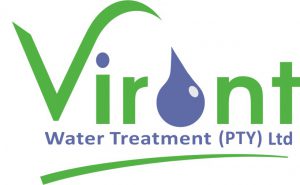Nutrient Removal
Sewage wastewater typically has high levels of the nutrients nitrogen, form urine, and phosphorous from washing soaps and powders and unless these nutrients are removed from the wastewater they will cause eutrophication of surface water bodies that the wastewater flows into, resulting in algal and other plant blooms. The rapid growth of this plant material is unsustainable and once it starts dying off it decomposes, in the process removing the oxygen from the water. Eventually the water body becomes uninhabitable for the useful organisms that maintain the ecology of the water and it is rendered unusable for human consumption and use. It is also important to remove phosphorous from water intended for reuse as it can foul equipment. In South Africa the Department of Water Affairs has strict standards on the levels of nutrient and other contaminant concentrations that are permitted in waste water being discharged to the environment and failure to abide by these standards results in hefty fines for the polluter concerned. The General Standard for non-environmentally sensitive areas requires that water discharged to the environment has no more than 3mg/l of ammonia, 15mg/l of nitrate and nitrite and 10mg/l of phosphates. In areas designated as environmentally sensitive the Special Standards maximum levels are 2mg/l of ammonia, 1.5mg/l of nitrate and nitrite and 2.5mg/l of phosphates.
Being a semi-arid country with high levels of sunshine throughout the year, South Africa is particularly vulnerable to eutrophication in water bodies and it is for this reason that the country is a world leader in nutrient removal processes for wastewater.
Nitrogen
The nutrient nitrogen is removed from wastewater through the biological oxidation of ammonia (nitrification) by bacteria to nitrate followed by denitrification of the nitrate by another set of bacteria to nitrogen gas which escapes to the atmosphere. The bacteria carrying out the process of denitrification require anoxic conditions in the treatment tanks. Although the processes of nitrification and denitrification occur naturally and can be achieved in the environment in reed beds, lagoons and sand filters, the process can start to fail and is not very efficient if not managed which is why the best way to bring about nitrogen removal is in the controlled environment of the activated sludge process.
Phosphorus
The removal of phosphorus from wastewater can be achieved either chemically using precipitation with salts of iron such as ferric chloride, aluminum (e.g. alum) or lime, or biologically as part o the activated sludge process. Chemical removal of phosphorous can lead to the excessive production of sludge and is expensive as a result of the volumes of chemicals required. In as much as plant material such as algae readily takes up phosphorous in a eutrophied water body, so do the bacteria in an activated sludge treatment process also take up phosphorous and as the resulting sludge from this process is wasted to landfill or for soil conditioning the phosphorous is effectively removed from the water. Enhanced phosphorous uptake can be achieved in activated sludge by creating an anaerobic zone at the start of the process where the bacteria thriving in this zone take up phosphorous more readily than the bacteria occurring in the aerobic and anoxic zones.
